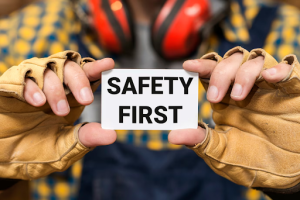
Imagine stepping into a workplace where safety isn’t just a protocol but a shared mindset. Where every employee feels empowered, engaged, and equipped to act safely, not out of obligation, but out of genuine understanding and commitment. This is the transformative power of integrating psychology into safety training.
In today’s fast-paced work environments, traditional safety training methods often fall short. They may convey information, but do they truly change behavior? To foster a culture of safety, we must delve deeper—into the human mind.
Understanding the Human Element in Safety
At the heart of every safety protocol is a human being—thinking, feeling, and reacting. Research indicates that human error contributes to a significant portion of workplace incidents. By understanding the psychological factors that influence behavior, organizations can design training programs that not only inform but also transform. (Source: Safety Plus)
Key psychological principles in safety training include:
- Behavioral Modeling: Demonstrating desired behaviors to encourage imitation.
- Reinforcement: Using positive feedback to strengthen safe behaviors.
- Cognitive Load Management: Ensuring information is presented in digestible amounts to prevent overload.
By incorporating these principles, training becomes more than a checklist—it becomes a catalyst for change.
The Rise of Psychological Safety

In 2025, psychological safety has emerged as a cornerstone of effective workplace training. It’s not just about physical well-being but also about creating an environment where employees feel safe to voice concerns, ask questions, and admit mistakes without fear of retribution. This openness leads to increased learning, innovation, and, ultimately, a safer workplace. (Source:EasySAFE)
Organizations are now recognizing that fostering psychological safety is not a luxury but a necessity. It encourages proactive behavior, where employees take ownership of safety, leading to a more resilient and responsive work environment.
Integrating Psychological Insights with Technology: Scrum Systems’ Approach
Scrum Systems recognizes the importance of psychological principles in safety training and integrates them seamlessly with advanced technology to create impactful training solutions.
AI-Driven Personalization
Understanding that each employee has unique learning needs, Scrum Systems employs AI to tailor training modules, ensuring content relevance and effectiveness.
Interactive Simulations
By utilizing virtual reality and interactive simulations, Scrum Systems provides immersive training experiences that mimic real-life scenarios, enhancing cognitive engagement and emotional connection.
Continuous Feedback Mechanisms
Feedback is crucial for learning. Scrum Systems incorporates real-time feedback within its training platforms, allowing employees to understand their progress and areas for improvement, fostering a growth mindset.Wikipedia+1arxiv.org+1
Community Learning Platforms
To harness the power of social learning, Scrum Systems offers platforms where employees can share experiences, discuss challenges, and learn collaboratively, reinforcing a culture of safety.
Introducing Scrum Systems: Pioneering Safety Training Solutions
Enter Scrum Systems—a trailblazer in integrating psychological insights into safety training. With over two decades of experience, Scrum Systems has developed innovative solutions that marry technology with human-centric design.
Safety Training Kiosk (STK™)
At the forefront of their offerings is the Safety Training Kiosk (STK™). This AI-enabled platform revolutionizes safety training by Scrum System.
- Interactive Learning: Engaging users with immersive 360-degree content tailored to specific roles and risks.
- Behavioral Analytics: Assessing user responses to identify areas for improvement.
- Customized Content: Allowing organizations to create and manage training materials that resonate with their workforce.
The STK™ doesn’t just teach safety—it instills it, ensuring that knowledge translates into action.
Aligning with Modern Training Trends
Scrum Systems’ approach aligns seamlessly with current trends in safety training:
- Gamification: Making learning engaging through interactive elements.
- Microlearning: Delivering content in short, focused segments to enhance retention.
- Data-Driven Insights: Utilizing analytics to continuously refine training effectiveness.
By embracing these trends, Scrum Systems ensures that safety training is not only effective but also adaptable to the evolving needs of the workforce.
Building a Culture of Safety

Ultimately, effective safety training is about more than compliance—it’s about culture. By understanding and engaging the human mind, organizations can foster environments where safety is a shared value, not just a mandate.
Scrum Systems stands at the intersection of psychology and technology, offering solutions that empower employees and elevate safety standards. Their commitment to innovation and human-centric design makes them a valuable partner in any organization’s safety journey.



